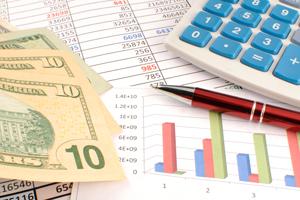Clean Air Markets - Allowance Markets
Overview

An allowance authorizes a utility or industrial source to emit 1 ton of emissions during a given compliance period. Allowances are fully marketable commodities. Once allocated, allowances may be bought, sold, traded, or banked for use in future years.
Frequently Asked Questions About the Allowance System
- What Is Allowance Trading?
- What Is A General Account?
- Who May Participate in Allowance Trading?
- How Are Allowances Allocated?
- How Else Can Allowances Be Obtained?
- How Are Allowance Transfers Submitted?
- How Does EPA Keep Track of Allowances?
- How Are Allowances Used for Compliance?
What Is Allowance Trading?
Allowance trading allows sources in cap and trade programs to adopt the most cost-effective strategy to reduce emissions. Affected sources are required to install systems that continuously monitor emissions of SO2, NOx, and other related pollutants in order to track progress and ensure compliance. Sources that reduce their emissions below the number of allowances they hold may trade allowances with other sources in their system, sell them to other sources on the open market or through EPA auctions, or bank them to cover emissions in future years.
What Is A General Account?
A general account may be opened by any person, company, or organization for the purpose of holding and transferring allowances. General accounts are not tied to specific plants, and are not considered compliance accounts. In addition to the compliance accounts established for them by the EPA, members of the regulated community may also open general accounts to hold or transfer allowances.
Who May Participate in Allowance Trading?
Any individual, corporation, or governing body, including brokers, municipalities, environmental groups, and private citizens, may participate in the allowance market. Any party wishing to purchase allowances may open a general account. Members of the regulated community may also open general accounts, in addition to the compliance accounts established for them by EPA to hold or transfer allowances.
How Are Allowances Allocated?
Allowances can be allocated in several ways under the cap on emissions. EPA allocates allowances for the Acid Rain Program based on a rate of SO2 emissions (in lbs/million British thermal units) and a baseline fuel consumption. These regulations are listed in 40 CFR 73.10, Tables 1 and 2(55 pp, 5.5 MB, About PDF). For other programs, such as CAIR and CSAPR, allowances can be allocated according to formulas recommended by EPA, or by an alternative method in states that have an approved State Implementation Plan (SIP).
How Else Can Allowances Be Obtained?
Allowances can be bought directly from a company or individual who holds them. They can also be bought through a broker or through an environmental group that “retires” allowances so they can’t be used to cover emissions. Additionally, SO2 allowances under the Acid Rain Program can be bought at EPA's Annual SO2 Allowance Auction. To bid in the EPA auctions please see the How to Bid Factsheet in the Auction section of Clean Air Markets Forms page.
How Are Allowance Transfers Submitted?
Authorized account representatives or their agents can transfer allowances through the CAMD Business System (CBS) or by submitting an Allowance Transfer Form.
How Does EPA Keep Track of Allowances?
EPA maintains an Allowance Management System (AMS) to record allowance transfers. AMS accounts are the official records for allowance holdings and transfers used for compliance purposes. To facilitate tracking and recording, EPA assigns every account an identification number and every allowance a serial number. Each affected source, corporation, group, or individual holding allowances has an account in the AMS.
All the information in AMS is available in EPA’s Air Markets Program Data (AMPD).
How Are Allowances Used for Compliance?
Under the Acid Rain Program, one allowance is equivalent to 1 ton of SO2 during a given year or any subsequent year. Under CAIR and CSAPR, there are annual NOx and SO2 allowances, as well as seasonal NOx allowances. At the end of each year or ozone season, the source must hold an amount of allowances at least equal to its emissions for that time period. For example, a source that emits 5,000 tons of SO2 must hold at least 5,000 allowances that are usable in that year. Regardless of how many allowances a source holds, however, it is never entitled to exceed the limits set under Title I of the Act to protect public health.
Buying Allowances

Under EPA's cap and trade programs, anyone can purchase allowances, including both regulated companies and members of the general public. EPA itself does not sell allowances; our job is to track allowance holdings and record transactions.
Allowances can be bought directly from a company or an individual who holds them, through a broker, or through an environmental group that "retires" allowances so they can't be used to cover emissions. Additionally, SO2 allowances under the Acid Rain Program can be bought at EPA's Annual Allowance Auction.
Brokers
Brokers bring together parties that have allowances to buy and sell. Brokers are more appropriate for higher volume allowance transactions. The following list represents the brokers and traders that EPA knows about. The list is based on publicly available information and may not be complete. Mention of trade names or commercial entities does not constitute endorsement or recommendation for use. If you are a broker or trader and would like to be added to the list, please let us know.
| Name | Phone | Website The following links exit the site Exit |
|---|---|---|
| Air & Liquid Advisors | 713-225-6600 | www.aladvisors.net |
| Amerex Energy | 281-340-5200 | www.amerexenergy.com/environment/ |
| BGC Environmental Brokerage Services | 646-346-6899 | www.emissionstrading.com |
| Element Markets LLC | 281-207-7200 | www.elementmarkets.com |
| Emission Advisors, Inc. | 713-385-3321 | www.emissionadvisors.com |
| Evolution Markets | 914-323-0255 | www.evomarkets.com |
| GFI Group, Inc. | 212-968-6937 | www.gfigroup.com |
| ICAP Energy | 281-340-8300 | www.icapenergy.com |
| ICE Futures U.S. | 312-836-6727 | www.theice.com |
| Marex Spectron | 360-892-3300 | www.marexspectron.com |
| Natsource | 212-232-5305 | www.natsource.com |
| New York Mercantile Exchange | 212-299-2301 | www.nymex.com |
| Polaris Markets Ltd | 316-775-1900 | www.polarismarkets.com |
| TFS Energy | 212-943-2883 | www.tradition.com |
SO2 Allowance Auctions

Once a year, EPA auctions a certain number of SO2 allowances. Utilities, environmental groups, allowance brokers, and anyone else interested in purchasing allowances can participate. Auction allowances are sold to the highest bidder until no allowances remain. Successful bidders are notified and listed on EPA’s website.
To bid in the EPA auctions please see the How to Bid Factsheet in the Auction section of Clean Air Markets Forms page. For more information on EPA’s SO2 allowance auction, see the Allowance Auction Fact Sheet.
